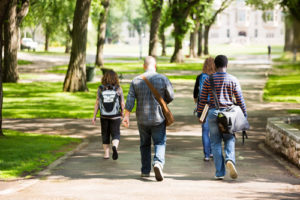It’s no secret that higher education is facing a pivotal moment right now. COVID-19 has highlighted many of the issues critical to higher education administrators today, including rising tuition costs and general student safety. Utah’s Snow College, and myself as president, are not immune to that.
Amidst this pandemic, I urge all administrators to adopt student-first initiatives and policies as you discuss and develop plans for the fall semester. No matter the method – be it fully online, fully in-person, or some combination of the two – students are facing the academic setting with more personal and emotional challenges to learning than ever before. For students of color or low socioeconomic status, they’re likely facing even more of that stress load.
Related content: Back to campus in the fall?
When the COVID-19 pandemic first garnered attention, Snow College faced a unique challenge: protecting not only our students but also the local community. Based in the small Utah farming town of Ephraim, Snow College is home to more than 5,000 college students, but the remaining community skews far older. The overwhelming majority of our students are not from Ephraim or neighboring communities. Many come from the populace Wasatch Front, including cities like Salt Lake City and Provo.
Navigating COVID-19 during the spring semester was extremely difficult given the many factors we had at play both within the institution and in our larger community. However, alongside community and fellow Snow College leaders, we were able to finish the semester with no confirmed cases of COVID-19 amongst our students, and less than a dozen in Ephraim.
As we plan to re-open in-person classes for the fall, via a hybrid model alongside online courses and services, I’m hoping to continue the success of our spring semester by taking these precautions:
Reminding students that it’s not “someone else’s disease”: One of the most challenging aspects of this pandemic for Snow’s student population is that because of our low infection rate and rural location, COVID-19 was seen as “someone else’s disease.” Many of our students didn’t personally know or hear of anyone close to them contracting the coronavirus, and so it was easy for them to view it as a problem for city-dwellers in far-off New York and Seattle. Alongside local city leaders, Snow administrators made it a priority to communicate regularly with students and local residents to remind them of the severity of the virus and the necessary precautions for staying safe. This allowed for widespread compliance of mask-wearing and spatial distancing as our community supported efforts to get back to normal as quickly as possible, and it’s critical that this continues even as “pandemic fatigue” surges amongst individuals.
Partner with as many community leaders as possible: In an effort to overcommunicate with students and local residents, we found the most effective way to do so was by partnering with not just campus leaders, but also city officials. Very early on in March, we formed an emergency operations committee consisting of Snow College administrators, as well as a local police entity, student representatives, faculty, housing administrators, city managers, and other government officials to meet on a weekly, at minimum, basis. We also began and continue to hold regular online town hall meetings that anyone can join. Our top priority during these meetings is to disseminate relevant information as regularly as possible and to as many stakeholders as we can for as long as the virus remains a threat.
Without these measures to overcommunicate and reach as many students and local residents as possible, we know our COVID-19 cases would’ve been higher and our community members would have felt even more isolated and scared. We’re going to continue this regular cadence of information-sharing well into the fall semester as we prioritize student wellbeing and safety and continue to handle this problem as a larger community within Ephraim.
Even in reflecting on the initial measures we had implemented in the spring, and will continue to hold throughout the fall, many things have changed. Ephraim is no longer free of COVID-19 cases and we’ve seen complacency and loneliness lead to an uptick in the spread of the virus. We’re continuing to factor that into our plans for fall and re-prioritize student needs daily, which is what all higher education administrators should be doing. As of right now, we will be opening student housing as “family units” so that students can still live with one another and socialize, but only as small clusters to minimize virus contraction and spreading.
The months ahead are sure to be some of the most challenging yet, and as leaders during a crisis we’re all looking for a guiding principle to ensure we make the best decisions possible. When it comes to the safety and wellbeing of campus and surrounding communities, it’s clear that the best path forward is one that prioritizes students and encourages creative solutions to meet student needs and address their concerns.
As I look to keep students and surrounding residents in Ephraim safe, my best strategies will come from a student-first mentality, and I encourage leaders across the nation to do the same.
- A bungled FAFSA rollout threatens students’ college ambitions - April 19, 2024
- Using real-world tools to prepare students for the workforce - April 18, 2024
- 8 top trends in higher education to watch in 2024 - April 16, 2024

